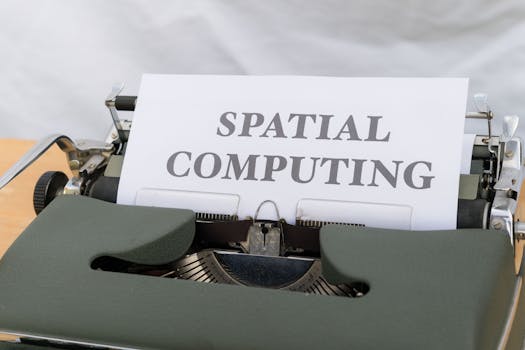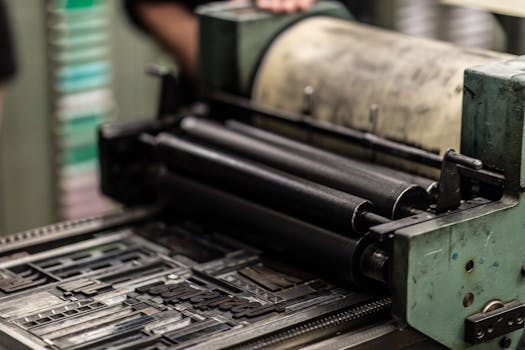The Top 5 3D Printing Software Programs for Geeks
3D printing has revolutionized the way we create and manufacture objects. From simple toys to complex medical devices, 3D printing has opened up endless possibilities for innovation and creativity. For geeks, this technology is especially exciting as it allows them to bring their ideas to life in a tangible and functional form. However, in order to turn your ideas into reality, you need the right software to design and print your creations. In this article, we will explore the top 5 3D printing software programs for geeks.
1. Blender
Blender is a free and open-source 3D modeling software that is popular among geeks and professionals alike. It offers a wide range of tools and features for creating complex 3D models, including sculpting, animation, and simulation. One of the key advantages of Blender is its ability to handle high-poly models, making it ideal for creating detailed and intricate designs. It also has a large and active community, which means there are plenty of tutorials and resources available for beginners to learn and improve their skills.
2. Tinkercad
Tinkercad is a user-friendly 3D modeling software that is perfect for beginners and hobbyists. It has a simple drag-and-drop interface, making it easy to create basic 3D models without any prior experience. Tinkercad also offers a variety of pre-made shapes and objects that can be easily customized and combined to create more complex designs. While it may not have all the advanced features of other software programs, Tinkercad is a great starting point for those new to 3D printing.
3. Fusion 360
Fusion 360 is a powerful 3D modeling software that is widely used in the engineering and design industries. It offers a comprehensive set of tools for creating precise and functional designs, including parametric modeling, simulation, and rendering. One of the standout features of Fusion 360 is its ability to collaborate and share designs with others in real-time, making it a great choice for team projects. While it does have a steeper learning curve compared to other software programs, the end result is worth the effort for geeks looking to create professional-grade designs.
4. Meshmixer
Meshmixer is a free 3D modeling software that is perfect for creating organic and sculptural designs. It offers a variety of tools for manipulating and editing 3D meshes, making it ideal for creating intricate and detailed models. Meshmixer also has advanced features such as 3D printing analysis and support generation, which can be useful for ensuring your designs are printable. While it may not have the same level of precision as other software programs, Meshmixer is a great tool for geeks looking to experiment and push the boundaries of 3D printing.
5. Simplify3D
Simplify3D is a popular slicing software that is used to prepare 3D models for printing. It offers a range of advanced features such as customizable support structures, variable layer heights, and multi-material printing. Simplify3D also has a user-friendly interface and a powerful simulation tool that allows you to preview your print before sending it to the printer. While it does come at a higher price point compared to other software programs, Simplify3D is a favorite among geeks for its speed, reliability, and advanced features.
In conclusion, 3D printing software plays a crucial role in bringing your ideas to life. Whether you are a beginner or an experienced geek, there is a software program out there that will suit your needs and help you create functional and impressive designs. From free and user-friendly options to more advanced and professional-grade software, the possibilities are endless with 3D printing. So go ahead, pick your favorite software and start printing your first functional gadget today!
How to Design and Print Your Own Customized Phone Case Using 3D Printing

3D printing has revolutionized the way we create and manufacture objects. From small trinkets to large-scale industrial parts, this technology has opened up endless possibilities for customization and personalization. For geeks and tech enthusiasts, 3D printing offers a unique opportunity to design and print their own functional gadgets. In this article, we will guide you through the process of designing and printing your very own customized phone case using 3D printing technology.
Step 1: Designing Your Phone Case
The first step in creating your own customized phone case is to design it. There are various software programs available that allow you to design 3D models, such as Tinkercad, SketchUp, and Fusion 360. These programs are user-friendly and offer a wide range of tools to help you create your desired design.
Start by measuring your phone’s dimensions and use those measurements to create a basic shape for your phone case. You can then add details and customize the design according to your preferences. This is where your creativity and imagination can truly shine. You can add intricate patterns, engravings, or even your favorite geeky symbols to make your phone case truly unique.
Step 2: Preparing Your Design for Printing
Once you have finalized your design, the next step is to prepare it for printing. This involves converting your 3D model into a format that is compatible with 3D printers. Most 3D modeling software programs have an option to export your design as an STL file, which is the standard file format used for 3D printing.
It is important to ensure that your design is watertight, meaning there are no holes or gaps in the model. This is crucial for a successful print as any imperfections in the design can result in a flawed final product. You can use a software program like Meshmixer to check and repair any issues with your design before proceeding to the next step.
Step 3: Choosing the Right 3D Printer and Material
There are various types of 3D printers available in the market, each with its own unique features and capabilities. For beginners, a desktop FDM (Fused Deposition Modeling) printer is a good option as it is affordable and easy to use. However, if you want a higher quality print, you can opt for a resin-based SLA (Stereolithography) printer.
In addition to choosing the right printer, it is also important to select the right material for your phone case. PLA (Polylactic Acid) is a popular choice for 3D printing as it is biodegradable and easy to work with. However, if you want a more durable phone case, you can opt for ABS (Acrylonitrile Butadiene Styrene) or PETG (Polyethylene Terephthalate Glycol-Modified).
Step 4: Printing Your Phone Case
Once you have your design and materials ready, it’s time to start printing your phone case. Make sure to follow the instructions provided by the manufacturer for setting up your printer and loading the material. It is also important to ensure that your printer’s bed is level and clean to avoid any printing issues.
The printing process can take anywhere from a few hours to a day, depending on the complexity and size of your design. It is important to be patient and not interrupt the printing process as it can affect the final outcome. Once the printing is complete, carefully remove your phone case from the printer’s bed and let it cool down before handling it.
Step 5: Finishing Touches
After your phone case has cooled down, you can add any finishing touches to make it look even more polished. This can include sanding down any rough edges, painting or adding a clear coat for a glossy finish. You can also add a phone grip or a pop socket to make your phone case more functional.
In conclusion, 3D printing offers a unique opportunity for geeks to design and print their own functional gadgets. By following these steps, you can create your very own customized phone case that reflects your personality and interests. So why settle for a generic phone case when you can design and print your own? Let your creativity run wild and start printing your first functional gadget today!
Exploring the World of 3D Printing Filaments: Which One is Right for Your Geeky Project?
3D printing has revolutionized the way we create and manufacture objects. From simple toys to complex medical devices, 3D printing has opened up a whole new world of possibilities. For geeks, this technology offers endless opportunities to bring their ideas to life. With the right filament, you can print your first functional gadget and take your geekiness to the next level.
But with so many different types of filaments available, how do you know which one is right for your project? In this article, we will explore the world of 3D printing filaments and help you choose the perfect one for your geeky project.
First, let’s understand what a filament is. A filament is a thin, flexible material that is used as the raw material for 3D printing. It is fed into the 3D printer and melted to create the desired object layer by layer. There are various types of filaments available, each with its own unique properties and uses.
1. PLA (Polylactic Acid)
PLA is one of the most popular filaments used in 3D printing. It is made from renewable resources such as corn starch or sugarcane and is biodegradable, making it an environmentally friendly option. PLA is easy to print with and has a low melting point, making it suitable for beginners. It also comes in a wide range of colors, making it perfect for creating colorful and vibrant gadgets.
2. ABS (Acrylonitrile Butadiene Styrene)
ABS is another commonly used filament in 3D printing. It is a strong and durable material, making it ideal for functional gadgets. Unlike PLA, ABS has a higher melting point, which means it can withstand higher temperatures. This makes it suitable for objects that will be exposed to heat or sunlight. However, ABS emits fumes during printing, so it is important to have proper ventilation when using this filament.
3. PETG (Polyethylene Terephthalate Glycol-Modified)
PETG is a versatile filament that combines the strength of ABS with the ease of printing of PLA. It is a transparent material, making it perfect for creating see-through gadgets. PETG is also resistant to chemicals and has a high melting point, making it suitable for functional objects that require durability.
4. TPU (Thermoplastic Polyurethane)
TPU is a flexible filament that is perfect for creating gadgets with moving parts. It is a rubber-like material that can be stretched and bent without breaking, making it ideal for creating phone cases, watch straps, and other accessories. TPU is also resistant to abrasion and has a high impact strength, making it suitable for objects that need to withstand wear and tear.
5. Nylon
Nylon is a strong and durable filament that is commonly used in industrial 3D printing. It has a high melting point and is resistant to chemicals, making it suitable for creating functional gadgets. Nylon is also lightweight and has a high tensile strength, making it perfect for creating objects that need to be both strong and lightweight.
6. Woodfill
Woodfill is a unique filament that contains wood particles, giving the printed object a wood-like appearance and texture. It is perfect for creating decorative gadgets or objects that require a natural look. Woodfill is also biodegradable and has a low shrinkage rate, making it easy to print with.
Best 3D Printing Ideas for beginners | Things to 3d Print
All STL Files here https://kady3dprinting.com/
In conclusion, choosing the right filament for your geeky project depends on the properties and characteristics you need for your gadget. Consider factors such as strength, flexibility, temperature resistance, and appearance when selecting a filament. With the right filament, you can bring your geeky ideas to life and create functional gadgets that will impress everyone. So go ahead, explore the world of 3D printing filaments and print your first functional gadget today!



